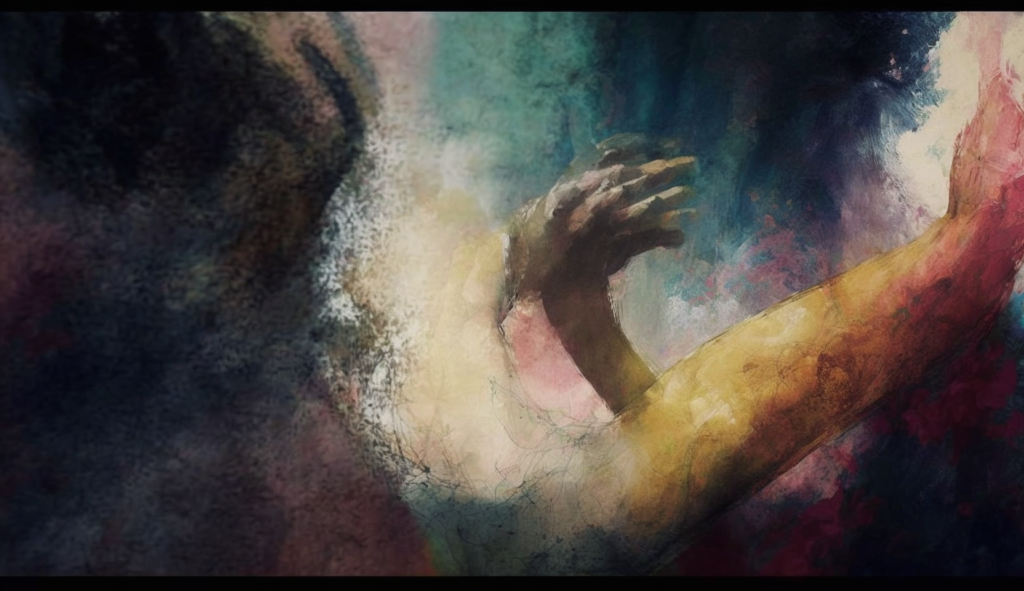Recovery is such a paradox—to be in control means to let go; to win you must know how/what to lose; to know God is to humbly embrace what you don’t know; to go deep in wisdom you must dare to embrace the commonplace average.
I can remember always trying too hard when I was a kid. Shamed by my athletic performance very young, I never thought I could measure up, so I would try harder than everyone else or so I thought. I remember when I was about 14, I worked for one of my older brothers who managed a Shell Oil gas station. He had given me an assignment to create a window display with all the oil cans that were for sale. Then, it was popular to create a kind of pyramid display. Some gas stations made it an artistic arrangement that expanded the entire picture window with a design that went all the way to the ceiling. I was determined that was what I was going to create. I thought about a design that made sense in my head and went to work. I would construct my pyramid almost to the top of the ceiling and then it would collapse—not a row or two but the entire pyramid which frustrated and embarrassed me. That morning I tried seven times—each attempt met with failure. My brother would stick his head in the room to see how I was doing at the most inconspicuous time—when the cans were spread out all over the floor. He kept asking “You ‘bout done ?” Each time he’d ask I’d get pissed and with determination. I’d try it again and then again. Finally, on the seventh failure, I cussed and began to cry. Fearful that I would be seen crying by my brother and called a “big baby” I went to the bathroom to hide. I got myself together went back to the display room picked all the oil cans and put them back in the boxes and quit! Then and a couple of other times prior to getting into recovery were the only times I recall ever quitting in my life. I was surrounded in a culture that taught me well that—whatever you do, don’t quit. The mantra “winners don’t quit” was ear wormed in my conscience and drove me at times into the ground.
The truth is that a champion’s testimony is about knowing when to quit and what to quit. Trying too hard always freezes capabilities and pushes away opportunities to achieve and move forward. The only way to recognize trying too hard is to try too hard and experience its disappointment and failure. Michael Jordan talked about letting go of trying too hard of doing everything for his team and allowing the game to come to him. He emphasized that it was this understanding of his profession that helped him to flourish in becoming the great basketball player he was destined to be. Many of us can relate to some degree about allowing our abilities and talents to develop and flourish professionally by letting go and allowing the work to come to us. So, professionally we soon learn that it is important to know what to quit as well as when to soldier on.
The challenge comes when life asks that we transfer this skill set of knowledge and wisdom into our personal relationships and recovery lives. Doing more and harder what doesn’t work needs to be stopped. Yet, many of us hold on with a death grip trying to control what we cannot control in our relationship lives. You can’t make your partner sober. You can’t make him/her stop ragging and nagging about how you lied, cheated, and broke their heart. You can’t make your son or daughter stop using or be successful. There’s absolutely nothing you can do to control anything or anyone but yourself. All attempts with temporary success are only an illusion that keeps you drunk with efforts to control. Only when you realize and surrender will you quit. That’s why we say “Rehab is for quitters”.
However, quitting often means to start. It means getting back into your own lane and recognizing your limitations. Surely, it means going deep within your own lane of understanding and mining the depths of family of origin hurt and dysfunction that fuels this compulsive need to control what you cannot. To quit means to embrace the personal fear and face what that might mean drawing upon the strength of a Higher Power and others who have been there. So quitting often means to start as well.
In recovery, sometimes we think we have to do so much to get it right so that we can escape the throes of addictive acting out. Yet, the truth is that some of you feel this way and you have not acted out—you are living profoundly different than you were when you were active in your addiction. Still, you feel the pressure that you have to do more to keep from being less. This is a sign that you are trying to control what you cannot. So you have to let go of making your partner’s smile of approval your everything and sole marker as to whether you are OK or not. Until you do you will not know the sweet spot of surrender that propels long-term sobriety. Letting go does not mean you are insensitive or boorish toward others, particularly your partner whose heart you have broken with your addictive acting out. It means a clear surrender and recognition that though you have broken trust. You cannot heal the broken heart of your partner and must retreat to gentle validation with healthy boundaries lest you take the bait of trying to control what you cannot. This can become a painful behavioral vortex that leads to overwhelm and relapse.
Trying to force things to happen is controlling. When you have done your part and then step out of your lane and get into controlling, caretaking, and coercing you have lost your way. Trying to make something happen is a good way to create a block that prevents what you hope from becoming a reality. It’s time to practice quitting again.
Melody Beattie, the author of Codependent No More, says “Do your part in relaxed, peaceful harmony. Then let it go. Just let it go. Force yourself to let it go. If necessary, “Act as if.” Put as much energy into letting go as you have into trying to control. You’ll get much better results. (Language of Letting Go, July 22). Most of us who get stuck in fear and try to cling to control must do deeper work at the point of a family of origin.
When I was a young boy movies with a Western theme dominated the television screen. I have this image of a stagecoach with a team of horses running out of control across the prairie. There is the stagecoach driver or the “Whip” and then there is this young boy sitting next to him hanging onto the side rail with all his might. At some point, the “whip” hands the reins for the horses to the young boy and says “Kid you’re on your own”. The prairie funnels into a narrow passageway with a 100’ drop-off. We all know that as long as the kid has the reigns that the coach and every animal attached is going to wind up at the bottom of that drop-off. However, the driver, the veteran “whip” firmly takes the reins from the boy and rather than chastise or berate the boy, he draws the boy close to his side as he takes charge. He whispers into the boy’s ear “I’ve been here many times before and I know how to get this team of horses to slow—even to a complete stop—and we will navigate this narrow passageway and all will be fine” and that is exactly what occurs.
You are the “whip” the stagecoach driver of your life. The only time you get into trouble is when you give the reins to the small child and expect him/her to navigate what only the experienced adult can manage. Truth is, we often hand the reins to the small child within. Yet, when we recognize and take back the reins from the child within, we successfully navigate, knowing when to let go of control, when to quit, and when to steady the course and persevere. Surrendering what you cannot control will require the powerful adult within you to take the reins from the fearful child within.





